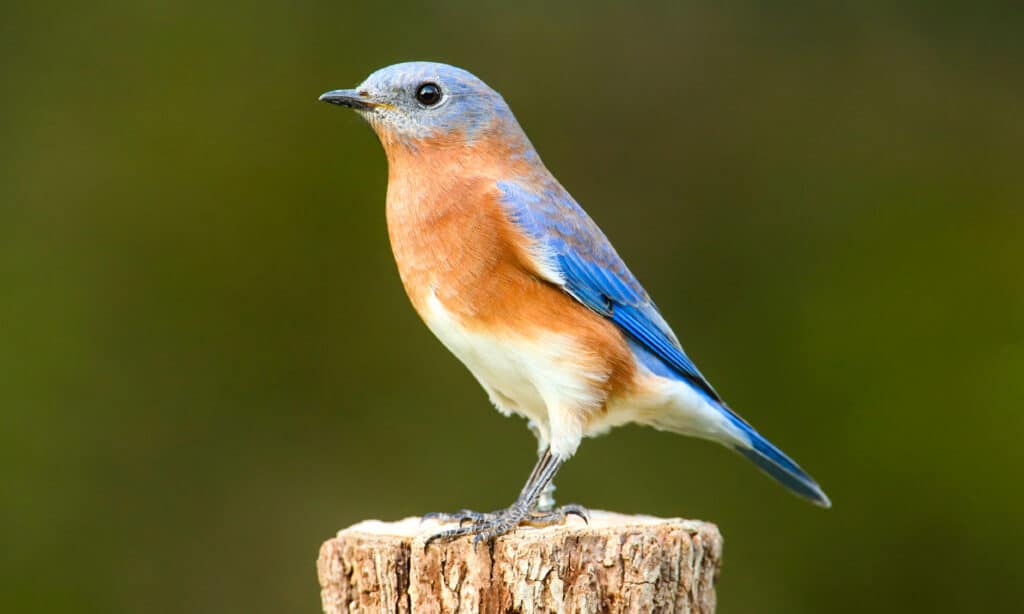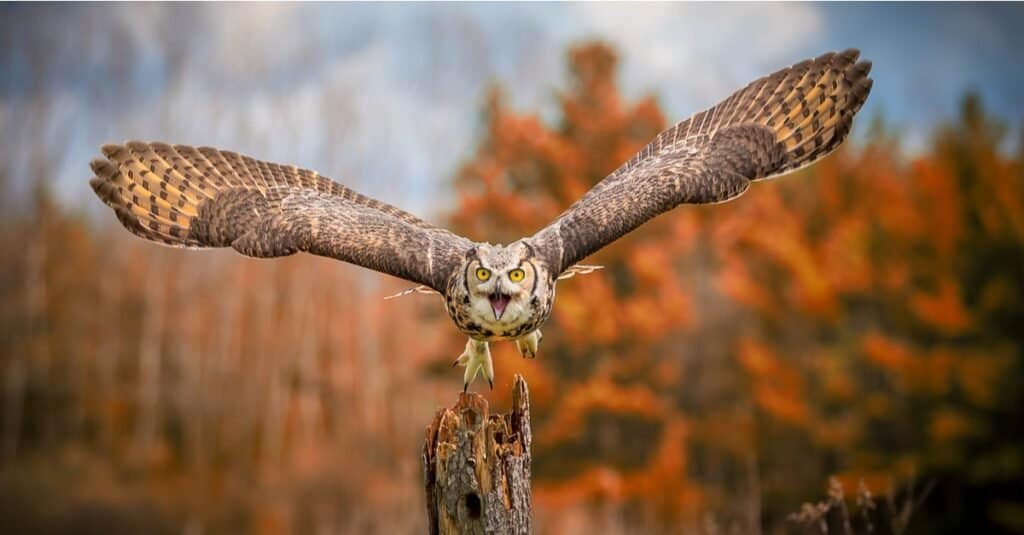Georgia is home to several different types of natural environments, including the lush Piedmont and hardwood forests, as well as coastal shores and the undulating slopes of the North Georgia mountains.
Georgia is home to more than 300 distinct bird species, which glide above it all! The state is ideal for some of these intriguing flyers year-round, while others come here as part of their migratory routes.
These Georgia birds all have distinctive features and characteristics that make them fascinating to see, and each one is lovely in its own right. This list of Georgia’s most appealing birds includes essential details for each species’ identification.
Red-headed Woodpecker

The Red-headed Woodpecker was given the nicknames “flag bird” and “flying checker-board” due to its striking red, black, and white color pattern.
©vagabond54/Shutterstock.com
The Red-headed Woodpecker, which gets its name from its solid red head, is a standard size bird with a stubby tail and a robust bill. They have been given the nicknames “flag bird” and “flying checker-board” due to their striking red, black, and white color pattern.
Throughout the year, Georgian farms, open woodlands, and pine Savannahs are home to woodpeckers. They will pound at the wood of a tree in the manner of a woodpecker to discover insects to consume. However, they are also found to collect insects on the land or in the air.
They might even be seen consuming certain fruits and tiny seeds.
Brown Thrasher

Brown thrashers can be challenging to detect because they like to hide out in bushes, undergrowth, and other vegetation.
©iStock.com/johnandersonphoto
The Brown thrasher, Georgia’s state bird, must be included on any list of avian species in the state. Brown thrashers can be seen all through the Appalachian Mountains, moving westward towards the Rockies and northward into Canada. Although they live most of the winter in the Southeast of the US, they travel north in the summer.
They can be challenging to detect because they like to hide out in bushes, undergrowth, and other vegetation, but once you do, you can’t help but notice their beauty. A foxy brown color and a creamy underbelly with dark striping characterize them. The distinctive singing abilities of Georgia’s state bird is yet another amazing quality.
Ruby-throated Hummingbird

Ruby-Throated Hummingbirds are drawn to red and orange flowers instinctively.
©Palantirian/Shutterstock.com
The only hummingbird species that breed in Georgia is the ruby-throated hummingbird. Therefore, they are the most prevalent hummingbirds in Georgia. These brilliant birds emerge in a sudden burst of green, their wings beating up to 53 times every second.
They are allowed to live there throughout the entire year. As a migratory species, however, most will emerge in late February or early March and depart before the pinnacle of the fall foliage in late October.
They are instinctively drawn to red and orange flowers, but if you set out the appropriate combination of blooms, you may easily persuade them to come to a hummingbird feeder. Prepare your own hummingbird syrup by combining one part sugar and four parts water. Red food coloring should not be added as it is bad for the birds and doesn’t add anything beneficial.
Eastern Bluebird

Eastern Bluebirds are year-round residents of Georgia.
©Steve Byland/Shutterstock.com
The Eastern Bluebird is one of Georgia’s cutest tiny birds, with an appearance right out of a Disney film. The males’ intensely vivid azure color contrasts sharply with the females’ more muted hue. Both have chests that are rusty in color with white embellishments.
Eastern Bluebirds are year-round residents of Georgia. They can be found in semi-open areas with sporadic trees, farmland, and other habitat types.
In the past, habitat destruction and a lack of nesting locations contributed to the population of these lovely birds diminishing. Their number has grown over the past few decades, largely due to residential birdhouses!
Great Horned Owl

Great horned owls can be found in a range of environments, such as marshes, woodlands, open spaces, and along streams and rivers.
©Imran Ashraf/Shutterstock.com
With a portly physique, intense yellow eyes, and enormous tufts of feathers on their head that resemble horns, the great horned owl has the classic appearance when you picture an owl.
North America is home to these magnificent owls. They are year-round residents of Georgia and can be found in a range of environments, such as marshes, woodlands, open spaces, and along streams and rivers.
These owls hunt fiercely, most often at night while sitting in the trees, and are exceedingly skilled and ferocious. They are able to hunt at night because they have excellent hearing and vision in dim light.
Blue Jay

Blue jay can be found all year long, living in gardens, groves, and wooded areas near forest margins.
©iStock.com/BrianEKushner
Blue Jays are distinctive among Georgia’s lovely blue birds thanks to their alluring blue wings and tail feathers, striking black patterns, and sparkling white bellies.
They can eat anything, from nuts, seeds, and grains to small animals like amphibians, rodents, and other birds. They are extremely adaptive. In addition to being intelligent, blue jays regularly imitate the red-shouldered hawk’s call.
If you’re seeking Blue Jays in Georgia, you can find them all year long living in gardens, groves, and wooded areas near forest margins. Blue Jays can surprisingly blend in fairly well when they fly stealthily over the treetops, contrary to what their vivid color might have you believe.
Up Next
- Animals in Georgia
- Discover the Largest Great White Ever Found Off Georgia’s Coast
- 10 Amazing Mountains In Georgia
- Discover the Coldest Place in Georgia
The photo featured at the top of this post is © iStock.com/SteveByland
Thank you for reading! Have some feedback for us? Contact the AZ Animals editorial team.






